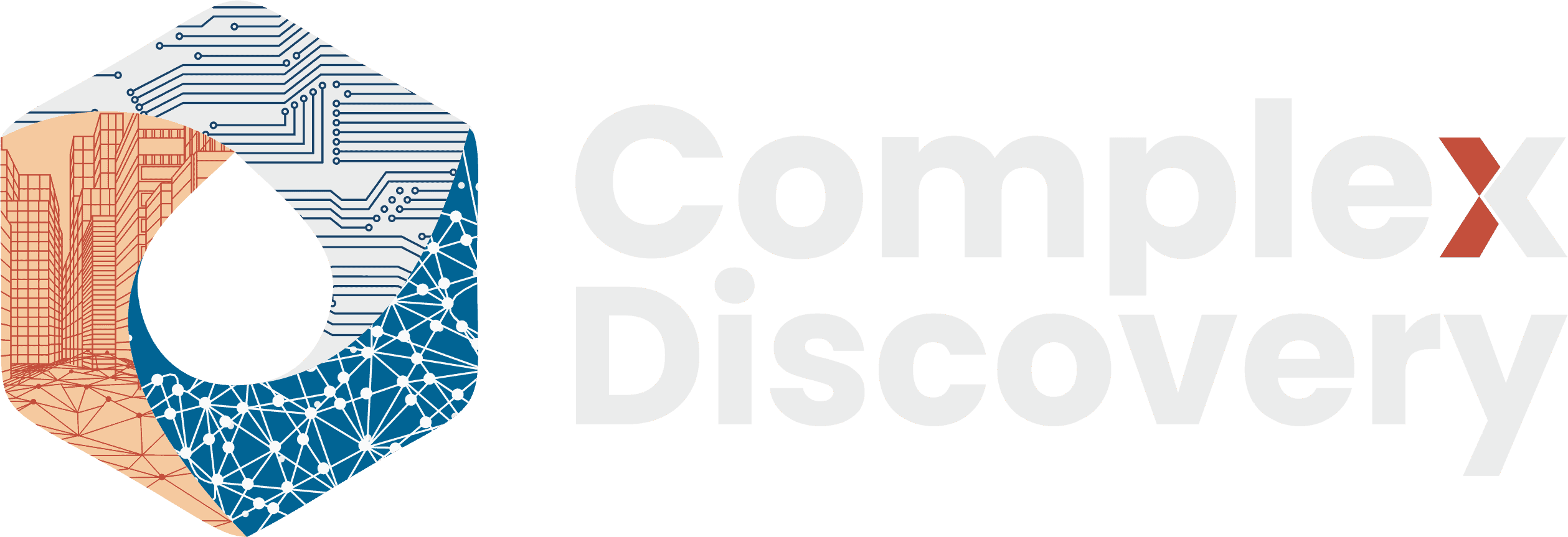Editor’s Note: The 2025 International Tax Competitiveness Index provides essential strategic intelligence for cybersecurity, information governance, and eDiscovery professionals navigating an increasingly complex global marketplace. Estonia’s unprecedented 12th consecutive top ranking demonstrates how thoughtful tax policy design creates sustainable competitive advantages through simplicity, digital efficiency, and neutrality. For technology firms managing sensitive cross-border data flows and international operations, understanding comparative tax environments has become as important as regulatory compliance frameworks. This analysis examines how tax competitiveness directly impacts operational costs, location strategy, and business development decisions. The stark contrast between Baltic leaders and struggling Western European economies reveals how tax structure—not just rates—determines whether jurisdictions attract or repel innovation-driven businesses. As corporate tax departments face mounting digitalization pressures and cybersecurity risks, jurisdictions offering streamlined, digital-first tax administration provide measurable operational advantages beyond pure rate competition.
Content Assessment: Estonia's Dozen: Twelve Years at No. 1 in the 2025 International Tax Competitiveness Index
Information - 94%
Insight - 92%
Relevance - 92%
Objectivity - 94%
Authority - 95%
93%
Excellent
A short percentage-based assessment of the qualitative benefit expressed as a percentage of positive reception of the recent article from ComplexDiscovery OÜ titled, "Estonia's Dozen: Twelve Years at No. 1 in the 2025 International Tax Competitiveness Index."
Industry News – Digital Residency Beat
Estonia’s Dozen: Twelve Years at No. 1 in the 2025 International Tax Competitiveness Index
ComplexDiscovery Staff
Estonia has claimed first place in the 2025 International Tax Competitiveness Index for an unprecedented 12th consecutive year, leaving economic heavyweights behind with a tax system that rewards reinvestment and minimizes complexity. France finished last among 38 Organisation for Economic Co-operation and Development members, while Italy ranked 37th, highlighting widening differences between streamlined tax frameworks and burdensome codes.
The Tax Foundation’s annual index evaluates more than 40 tax-policy variables across five categories—corporate taxes, individual taxes, consumption taxes, property taxes, and cross-border tax rules—to assess how countries structure levies for competitiveness and neutrality.
For technology-driven industries—cybersecurity, information governance, and eDiscovery—these rankings translate directly into operating choices. Jurisdictions with neutral structures and clear administration lower compliance risk, reduce execution frictions for cross-border services, and support scalable expansion.
Estonia’s Model and Why It Performs
Estonia’s corporate income tax of 22% applies only to distributed profits, allowing reinvested earnings to remain untaxed and supporting capital formation. A flat 22% individual income tax applies to earned income, while dividends from previously taxed profits are exempt from further taxation. Recurring property taxes apply only to land value, avoiding penalties on building improvements. Under Estonia’s territorial system, 100% of foreign profits are exempt from domestic taxation, provided they originate from legitimate foreign operations.
Digital efficiency supports this architecture. Estonia’s e-governance ecosystem integrates filing, payment, and reporting, compressing administrative time and reducing touchpoints for sensitive data—an operational advantage for security-focused and data-intensive firms.
How the Field Lines Up
Latvia ranks second after adopting Estonia’s cash-flow approach, applying a 20 percent corporate tax exclusively to distributed profits. New Zealand and Switzerland place third and fourth, respectively—the former pairing a broad 15 percent value-added tax (VAT) that covers 95.7 percent of consumption with relatively simple income-tax settings, and the latter combining a roughly 19.7 percent combined corporate rate with strong cross-border rules. Lithuania rounds out the top five with a 16 percent corporate rate.
The wider Baltic-Nordic cohort remains competitive. Sweden placed 11th, Finland 24th, Norway 21st, and Denmark 27th. Denmark’s position reflects high individual rates but territorial features that exempt foreign dividends and capital gains for treaty partners and European countries. This regional pattern points to the impact of broad bases, moderate rates, and clear cross-border frameworks.
Where Systems Strain Competitiveness
At the other end of the table, France’s combined corporate rate of 36.1 percent—the OECD’s highest—sits alongside narrow consumption-tax coverage (VAT base of 50.6 percent) and multiple distortionary levies. Italy’s 27.8 percent combined corporate rate and a VAT base covering 43.2 percent of consumption present similar challenges. Together, these features raise effective tax burdens and increase compliance friction relative to peers.
Policy Levers Behind the Rankings
Beyond headline rates, structural choices determine how taxes influence behavior:
- Digital services and transaction taxes. Gross-revenue levies on selected digital activities and financial transactions introduce size- and model-based distortions that can weigh heavily on lower-margin technology businesses.
- R&D incentives and patent boxes. While expenditure-based incentives can offset costs, they add administrative complexity and can steer capital based on eligibility rather than productivity. Baltic leaders generally rely more on neutral structures than on targeted carve-outs.
- Capital cost recovery. Estonia and Latvia effectively achieve immediate expensing through their distributed-profits model, aligning tax timing with cash flow. By contrast, many jurisdictions require multi-year write-offs that elevate user-costs of capital. New Zealand excels in VAT design but ranks comparatively low on capital allowances, illustrating how strengths in one category can coexist with weaknesses in another.
These mechanics explain why some systems remain attractive even when statutory rates converge.
Cross-Border Rules and Pillar Two
Cross-border architecture is a defining differentiator. Switzerland, the United Kingdom, and the Netherlands lead this category, reflecting strong participation-exemption regimes and extensive treaty networks; Estonia ranks seventh. These frameworks reduce friction by limiting withholding taxes, clarifying territorial scope, and making anti-avoidance rules more predictable.
Since 2024, the 15 percent global minimum tax (Pillar Two) has reshaped the environment for large multinationals. Yet its arrival does not negate the benefits of simplicity and neutrality. For companies below the Pillar Two threshold—and even for those within it—jurisdictions that combine coherent structures with efficient administration continue to stand out.
Operational Implications for Technology Businesses
For security and data-centric providers, tax design interacts with governance and risk. Simpler, digital-first systems reduce the number of processes and data transfers required for compliance, cutting error surfaces and the cost of assurance. That efficiency compounds across multi-jurisdiction operations where standardized processes are essential.
Looking Ahead
Estonia’s standard VAT rate is 24 percent in 2025. Public guidance indicates corporate and individual rates are scheduled to rise to 24 percent in January 2026, while Lithuania maintains its 16 percent corporate rate in 2025. Elsewhere, targeted reforms—such as full expensing in some markets or changes to cross-border rules—continue to shift positions year to year. The broader lesson endures: design decisions, not just tax levels, set the competitive foundation.
Bottom line: Estonia’s twelve-year run reflects a policy mix—cash-flow corporate taxation, flat individual rates, land-value property taxation, and territorial design—implemented within a highly digital administration. For cybersecurity, information governance, and eDiscovery organizations planning international footprints, benchmarking jurisdictions by structural features and compliance architecture will yield better outcomes than focusing on rates alone.
How will your organization adapt its international footprint as tax competition reshapes the global business map?
News Sources
- International Tax Competitiveness Index 2025 (Tax Foundation)
- Estonia has the most competitive tax code in the OECD (Estonian World)
- Overview of 2025–2026 tax changes (Grant Thornton Baltic)
- Estonia increases VAT to 24%: What businesses must know (Avalara)
Assisted by GAI and LLM Technologies
Additional Reading
- The Agentic State: A Global Framework for Secure and Accountable AI-Powered Government
- Cyberocracy and the Efficiency Paradox: Why Democratic Design is the Smartest AI Strategy for Government
- The European Union’s Strategic AI Shift: Fostering Sovereignty and Innovation
- Learning from Collective Failures: A Pre-Summit Reflection on AI Governance
- When the Sky Falls Silent: Europe’s New Hybrid Threat Landscape
- European Drone Incidents Expose Critical Gaps in Enterprise Security and Hybrid Defense
Source: ComplexDiscovery OÜ



























